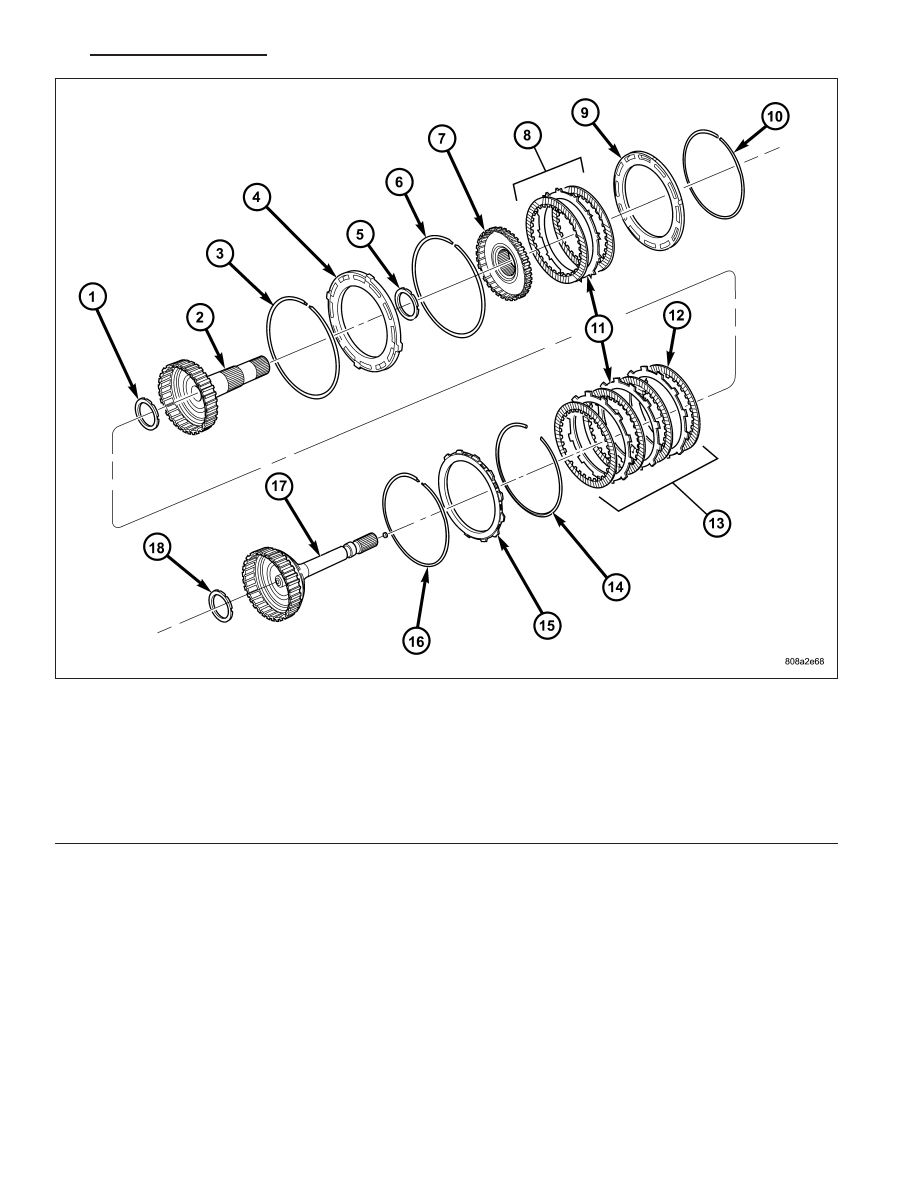Content .. 1324 1325 1326 1327 ..
Dodge Durango (HB). Manual - part 1326

27. Remove the reverse clutch pack (8) from the input clutch retainer.
28. Install the number 2 thrust bearing (18) onto the underdrive hub (17) with outer race against the hub with petro-
leum jelly.
29. Install the underdrive hub (17) into the input clutch retainer.
30. Install the number 3 thrust bearing (1) into the overdrive hub (2) with the outer race against the hub with petro-
leum jelly.
31. Install the overdrive hub (2) into the input clutch retainer.
32. Install the number 4 thrust bearing (5) into the reverse hub with outer race against the hub with petroleum jelly.
33. Install the reverse hub (7) into the input clutch retainer.
34. Install the complete reverse clutch pack (8).
35. Install the reverse reaction plate (9) and snap-ring (10).
36. Push up on reaction plate to allow reverse clutch to move freely.
Input Clutch Assembly - Part 2
1 - THRUST BEARING NUMBER 3
10 - SNAP-RING (SELECT)
2 - OD HUB/SHAFT
11 - PLATE
3 - SNAP-RING (WAVE)
12 - DISC
4 - REV/OD REACTION PLATE
13 - OD CLUTCH
5 - THRUST BEARING NUMBER 4
14 - SNAP-RING (TAPERED)
6 - SNAP-RING (FLAT)
15 - UD/OD REACTION PLATE
7 - REVERSE HUB/SHAFT
16 - SNAP-RING (FLAT)
8 - REVERSE CLUTCH
17 - UD HUB/SHAFT
9 - REVERSE REACTION PLATE
18 - THRUST BEARING NUMBER 2
HB
AUTOMATIC TRANSMISSION 545RFE - SERVICE INFORMATION
21 - 709